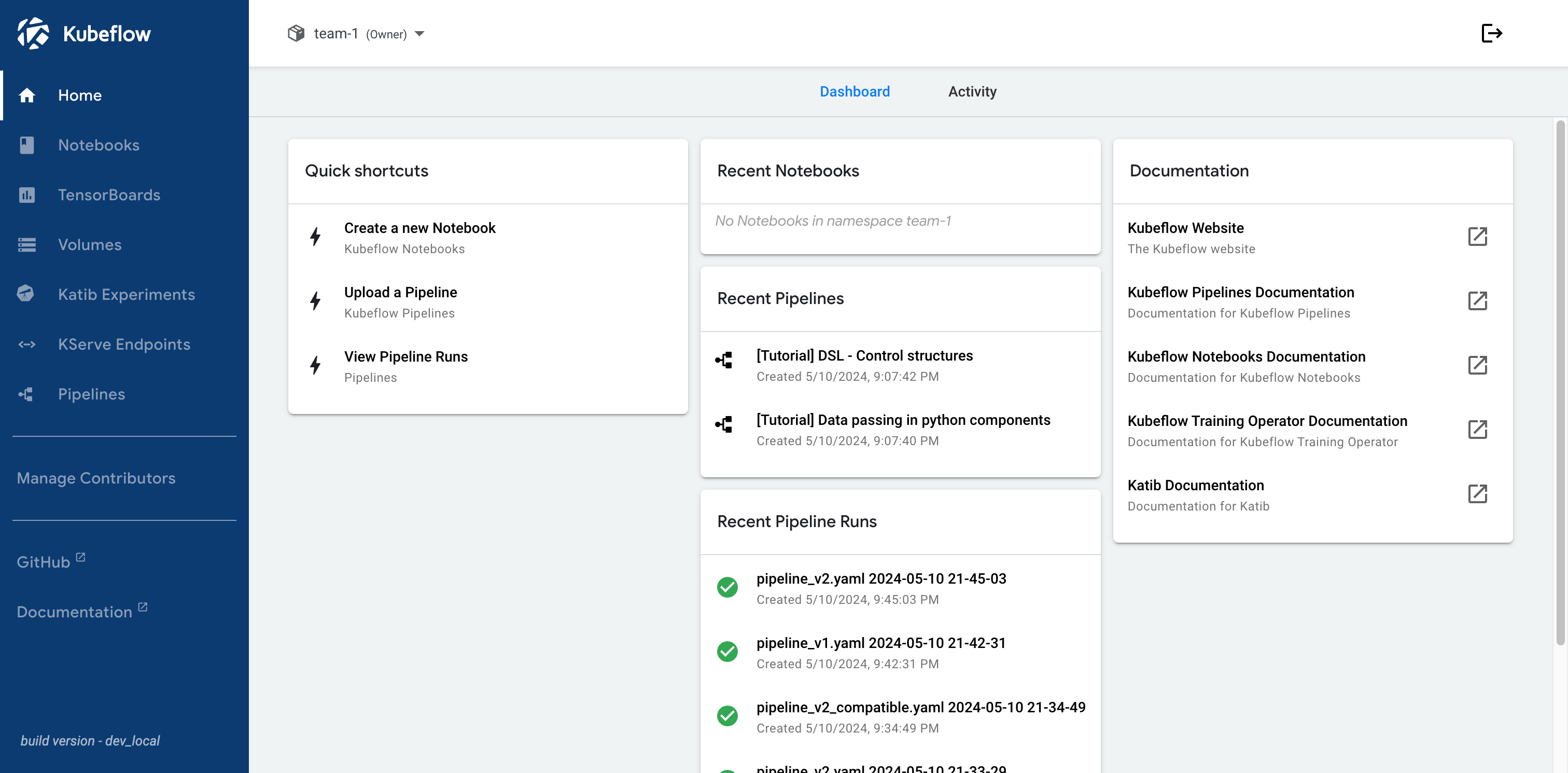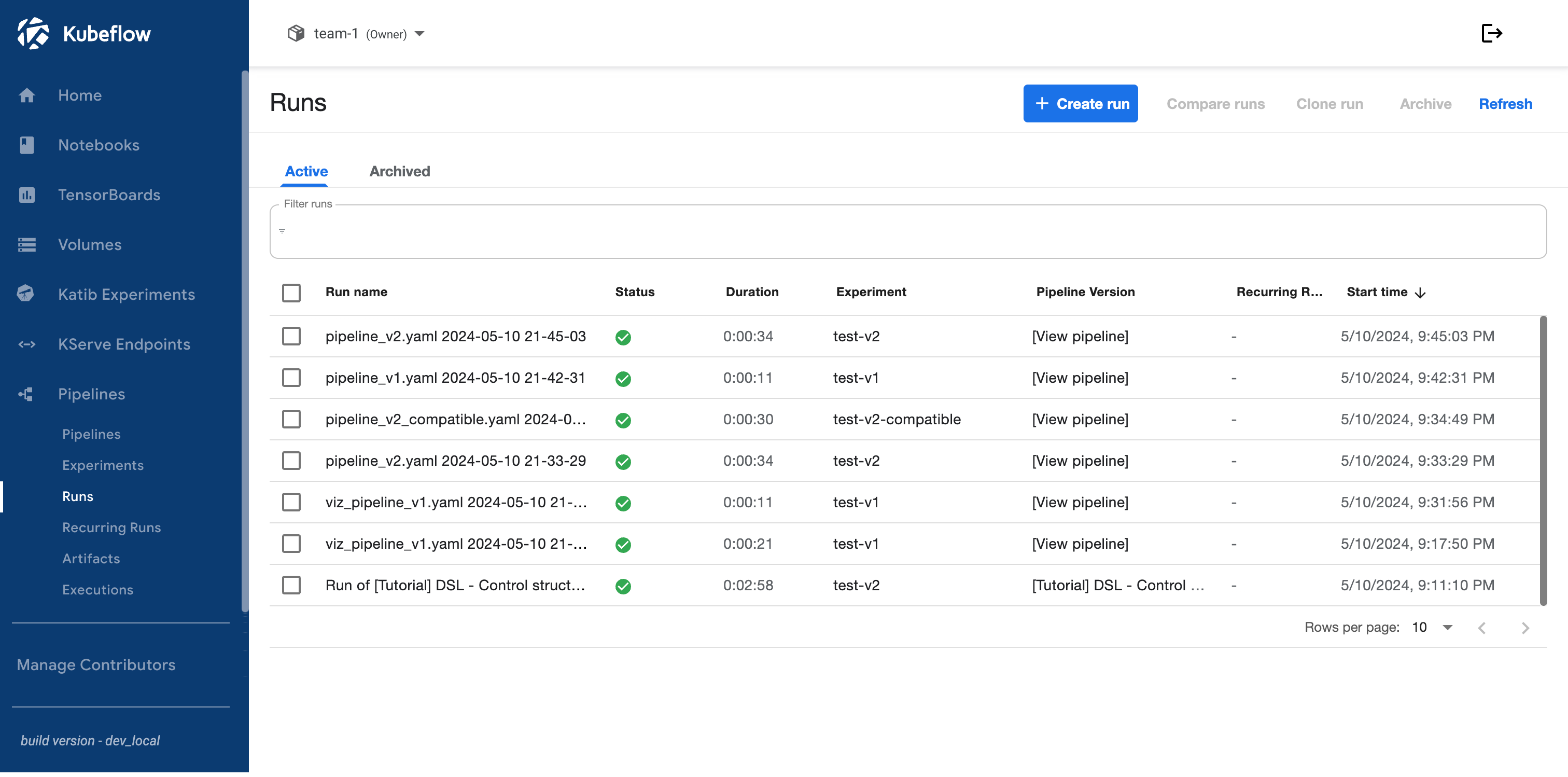Overview
What is the Kubeflow Central Dashboard?
The Kubeflow Central Dashboard provides an authenticated web interface for Kubeflow and ecosystem components. It acts as a hub for your machine learning platform and tools by exposing the UIs of components running in the cluster.
Some core features of the central dashboard include:
- Authentication and authorization based on Profiles and Namespaces.
- Access to the user interface’s of Kubeflow components.
- The ability to customize and include links to third-party applications.
Screenshots
Here is a screenshot of the Kubeflow Central Dashboard:

Navigation
Kubeflow and its components have a number of user interfaces which you access from the central dashboard.
Here is a list of the main pages, grouped by component.
Core Sections
The following sections are available in all Kubeflow deployments:
- Home: landing page for Kubeflow Central Dashboard
- Manage Contributors: manage contributors of profiles (namespaces) that you own
Kubeflow Notebooks
The following sections are available when Kubeflow Notebooks is installed:
- Notebooks: manage Kubeflow Notebooks
- TensorBoards: manage TensorBoard instances
- Volumes: manage Kubernetes PVC Volumes
Kubeflow Katib
The following sections are available when Katib is installed:
- Katib Experiments: manage Katib AutoML experiments
KServe
The following sections are available when KServe is installed:
- KServe Endpoints: manage deployed KServe model endpoints
Kubeflow Pipelines
When Kubeflow Pipelines is installed, you can select Pipelines from the sidebar:

In the Pipelines section, you can access the following pages:
- Pipelines: manage pipeline definitions
- Experiments: manage pipeline experiments
- Runs: manage pipeline runs
- Recurring Runs: manage recurring pipeline runs
- Artifacts: track artifacts produced by pipelines stored in MLMD
- Executions: track executions of pipeline components stored in MLMD
Next steps
- Learn how to Access the Central Dashboard.
- Learn about Profiles and Namespaces.
Feedback
Was this page helpful?
Glad to hear it! Please tell us how we can improve.
Sorry to hear that. Please tell us how we can improve.